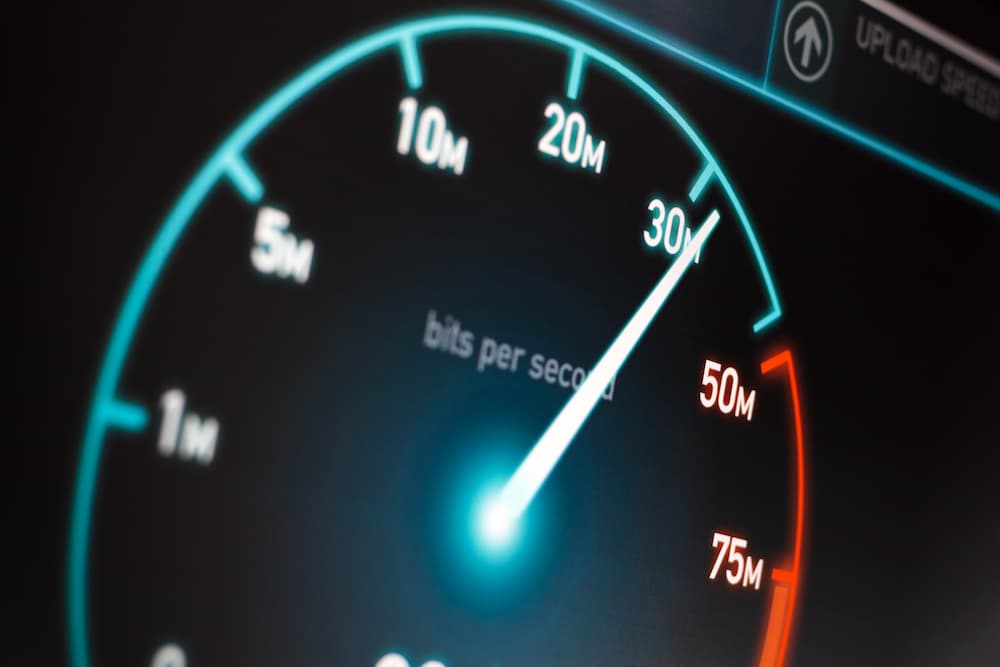Download vs Upload Speed
Everyone wants good Internet—but what does that mean? There are many ways to measure the quality of an Internet connection, but one of the most important factors is speed. Today’s Internet users need a connection that can support:
• many connected devices
• streaming videos
• live streaming
• interactive gaming
• remote work or study
These activities require robust Internet service with download and upload speeds capable of receiving and sending data in a flash.

How Internet Speed Works
What is the difference between download speed and upload speed? The download speed determines how fast data gets to your device, and the upload speed determines how fast data leaves your device. Download and upload speeds create your online experience. For example, on a Zoom call, you’re downloading the other person’s video output while simultaneously uploading your own.
In 2024, the average American household has 17* or more Internet-connected devices, including smartphones, tablets, TVs, gaming systems, cameras, doorbells, and even lightbulbs. Additionally, how we use our Internet connection has evolved. Telecommuting, telehealth, streaming, and social media are all common activities that benefit from robust download and upload speeds.
Older technologies used by telephone and cable companies are typically not as good at supporting uploads. Upload speeds from these companies are usually much slower than their download speeds – often more than 20 times slower. This difference in speed can make it harder to do activities that are upload-heavy like live streaming, video conferencing, and file sharing.
Fiber Internet is the most advanced technology available for Internet connections. Fiber optic networks are designed for data. This makes them very good at sending and receiving large amounts of information. Fiber Internet features plans with symmetrical speeds – that means that the download speed and the upload speed are the same – often at a lower cost than competitors using older technology.
How much speed do I need?
The right speed will vary from user to user. The simplest answer is that a good plan is a plan with both download and upload speeds that meet your needs. To find the right answer, you’ll need to consider how you use your Internet connection.
For example, if you frequently stream video over multiple devices, play games online, or work from home, you’ll need a robust upload speed to prevent a poor experience.
Also, a good Internet plan is able to support your whole household. Children, partners, roommates, and even guests share your Internet connection, so you need a plan that accommodates everyone. Here’s a quick checklist to help you decide on the right speed for your household:
Consider 1,000 x 1,000 Mbps (1 Gig symmetrical) if you:
• work or attend school at home
• have 10-20 connected devices
• play games online
• stream HD video
• live stream to social media
Consider faster than 1 Gig symmetrical speeds if you:
• have more than one household member that works or attends school from home
• have 20+ connected devices
• have a serious gamer in the household
Contact Omni Fiber today to learn more!
Omni Fiber connects many locations in Ohio and Pennsylvania with blazing-fast Internet speeds over a 100% fiber network. We offer symmetrical Internet speeds at affordable prices, and it’s all backed by local customer service you can rely on.
To learn more about how Omni Fiber can meet your speed needs, visit www.omnifiber.com or contact us to work with an Ohio-based agent who can help you select the right plan for your lifestyle.
*Parks Associates study released in January 2024 indicating that the average household in the United States has Internet-connected 17 devices. https://www.parksassociates.com/blogs/ce-pr/at-ces-2024-parks-associates-announces-new-research-showing-average-number-of-connected-devices-per-us-internet-household-reached-17-in-2023
Image Source: Tomislav Pinter/Shutterstock